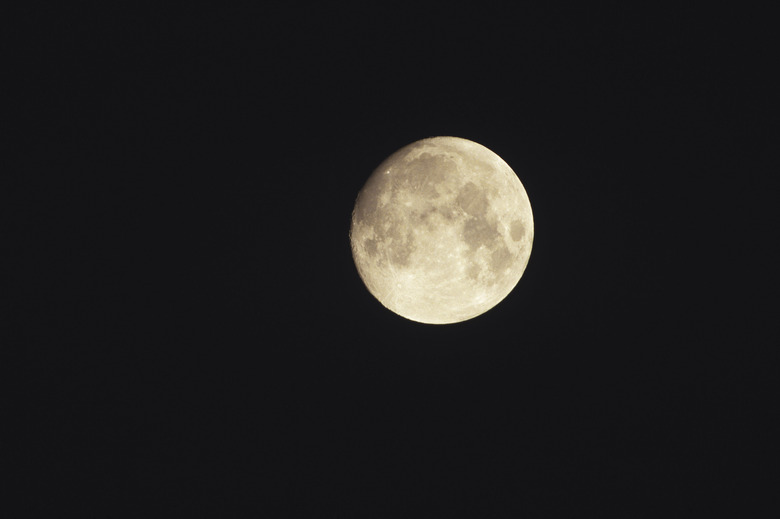What Chemicals Do The Earth & Moon Have In Common?
At first blush, the Earth and moon don't seem very similar; one is full of water and life, the other a sterile, airless rock. They do have many chemical substances in common, however. The moon is abundant in sandlike materials that are also found on Earth. Many elements that make up the Earth's crust and mantle are also seen on the moon in similar proportions. Recently, space missions have turned up stores of ice on the Moon, long hidden beneath its surface.
Shared Elements
The elements found in greatest abundance in the Earth include oxygen, silicon, aluminum, iron and calcium; these substances also make up the bulk of the moon. Although the moon is an airless world, it has large amounts of oxygen in the form of solid chemical compounds. Many of the elements on the right side of the periodic table, however, such as lead, mercury and tin, are rare on the moon.
Wealth of Water
Wealth of Water
Chemical compounds with low boiling points don't last long on the moon, as the combination of temperatures that hit 127 degrees Celsius (260 degrees Fahrenheit) and vacuum conditions means such substances evaporate quickly into space. So it was a big surprise when space probes discovered water in the form of ice on the moon in 1998 and later in 2009. Pockets of frozen water have survived for billions of years, buried under the surface and in hidden in shadows near the poles. Scientists estimate the moon holds several hundred million tons of water, the equivalent of a medium-sized lake.
Silicon Dioxide
Silicon Dioxide
On Earth, silicon dioxide takes many forms as minerals, including sand, quartz and natural glassy materials. The moon also has an abundance of this compound; although there is no wind or liquid water to weather rocks into sand, millions of meteor impacts have left the lunar landscape covered with sandy dust; green glass beads, also from the compound, are the result of silicon dioxide fused by the heat of meteor impacts.
Aluminum Oxide
Aluminum Oxide
Aluminum is an element found in abundance on the Earth and the moon, although not in pure metallic form; corundum, ruby and sapphire are earthly minerals made of aluminum and oxygen with other elements such as titanium mixed in. According to Washington University, most of the moon's aluminum is in a mineral called plagioclase. Some of this plagioclase has found its way to the Earth as meteorites, knocked from the moon by particularly powerful meteor impacts.
Cite This Article
MLA
Papiewski, John. "What Chemicals Do The Earth & Moon Have In Common?" sciencing.com, https://www.sciencing.com/chemicals-earth-moon-common-22788/. 24 April 2017.
APA
Papiewski, John. (2017, April 24). What Chemicals Do The Earth & Moon Have In Common?. sciencing.com. Retrieved from https://www.sciencing.com/chemicals-earth-moon-common-22788/
Chicago
Papiewski, John. What Chemicals Do The Earth & Moon Have In Common? last modified August 30, 2022. https://www.sciencing.com/chemicals-earth-moon-common-22788/
